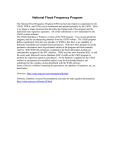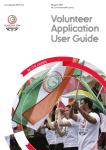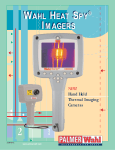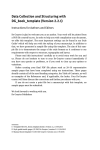Download A USER'S MANUAL TO THE
Transcript
Business/Project Management ® A User’s Manual to the PMBOK ® Guide takes the next logical step to act as a true user’s manual. Its accessible format and easy-to-understand language helps to not only distill essential information contained in the PMBOK ® Guide—Fourth Edition, but also fills an educational gap by offering instruction on how to apply its various tools and techniques. This book: • Defines each project management process in the PMBOK ® Guide —Fourth Edition, describes their intent, and discusses their individual ITTOs (inputs, tools and techniques, and outputs) • Features examples, handy tips, and sample forms to supplement learning • Is written by an author who was project manager for the PMBOK ® Guide —Fourth Edition • Contains a data flow diagram of each process in the PMBOK ® Guide—Fourth Edition to show how information is distributed ® PMBOK GUIDE A User’s Manual to the PMBOK ® Guide simplifies the PMBOK ® Guide —Fourth Edition to provide the springboard from which successful project management processes are interpreted and carried out in the real world. Thorough in coverage and rich in content, this manual is a worthy companion to augment the important strategies laid out in the PMBOK ® Guide —Fourth Edition — and the one book that aspiring or professional project managers should never be without. A USER’S MANUAL TO THE A USER’S MANUAL TO THE The professional standard in the field of project management, A Guide to the Project Management Body of Knowledge (PMBOK ® Guide—Fourth Edition) published by the Project Management Institute (PMI) serves as the ultimate resource for professionals and as a valuable studying and training device for students taking the PMP® exam. Yet its role—as an ANSI Standard for the industry—is often misunderstood and its content was never intended to be used as a textbook. STACKPOLE The must-have manual to understand and use the latest edition of the PMBOK Guide —Fourth Edition CYNTHIA SNYDER STACKPOLE is a well-known project management consultant. She was the project manager for the team that created PMI’s PMBOK ® Guide —Fourth Edition. Her successful A Project Manager’s Book of Forms has been packaged with the PMBOK ® Guide —Fourth Edition and is used by professionals and students. COVER ART: SIRONPE/ISTOCKPHOTO.COM ® PMBOK GUIDE CYNTHIA SNYDER STACKPOLE TOC.indd viii 7/28/10 9:03:29 AM A User’s Manual to the PMBOK® Guide PRELIMS.indd i 7/30/10 11:31:31 AM PRELIMS.indd ii 7/30/10 11:31:32 AM A User’s Manual to the PMBOK® Guide Cynthia Snyder Stackpole John Wiley & Sons, Inc. PRELIMS.indd iii 7/30/10 11:31:32 AM This book is printed on acid-free paper. Copyright © 2010 by John Wiley & Sons, Inc. All rights reserved Published by John Wiley & Sons, Inc., Hoboken, New Jersey Published simultaneously in Canada No part of this publication may be reproduced, stored in a retrieval system, or transmitted in any form or by any means, electronic, mechanical, photocopying, recording, scanning, or otherwise, except as permitted under Section 107 or 108 of the 1976 United States Copyright Act, without either the prior written permission of the Publisher, or authorization through payment of the appropriate per-copy fee to the Copyright Clearance Center, 222 Rosewood Drive, Danvers, MA 01923, (978) 750-8400, fax (978) 646-8600, or on the web at www.copyright.com. Requests to the Publisher for permission should be addressed to the Permissions Department, John Wiley & Sons, Inc., 111 River Street, Hoboken, NJ 07030, (201) 748-6011, fax (201) 748-6008, or online at www.wiley.com/go/permissions. Limit of Liability/Disclaimer of Warranty: While the publisher and the author have used their best efforts in preparing this book, they make no representations or warranties with respect to the accuracy or completeness of the contents of this book and specifically disclaim any implied warranties of merchantability or fitness for a particular purpose. No warranty may be created or extended by sales representatives or written sales materials. The advice and strategies contained herein may not be suitable for your situation. You should consult with a professional where appropriate. Neither the publisher nor the author shall be liable for any loss of profit or any other commercial damages, including but not limited to special, incidental, consequential, or other damages. For general information about our other products and services, please contact our Customer Care Department within the United States at (800) 762-2974, outside the United States at (317) 572-3993 or fax (317) 572-4002. Wiley also publishes its books in a variety of electronic formats. Some content that appears in print may not be available in electronic books. For more information about Wiley products, visit our web site at www.wiley.com. Project Management Institute (www.pmi.org) is the leading advocate for the project management profession globally. Founded in 1969, PMI has more than 400,000 members and credential holders in 174 countries. PMI’s Project Management Professional (PMP) credential is globally recognized as the gold standard credential in project management ©2010 Project Management Institute, Inc. All rights reserved. “PMI”, the PMI logo, “PMP”, “PMBOK” are registered marks of Project Management Institute, Inc. For a comprehensive list of PMI marks, contact the PMI Legal Department. Library of Congress Cataloging-in-Publication Data: Stackpole, Cynthia, 1962A user’s Manual to the PMBOK guide / Cynthia Stackpole. p. cm. Includes index. ISBN 978-0-470-58489-7 (pbk.); ISBN 978-0-470-89009-7 (ebk); ISBN 978-0-470-89010-3 (ebk); ISBN 978-0-470-89012-7 (ebk) 1. Project management. 2. Project management—Handbooks, manuals, etc. I. Guide to the project management body of knowledge (PMBOK guide) II. Title. HD69.P75S6894 2010 658.4'04—dc22 2010025380 Printed in the United States of America 10 9 8 7 6 5 4 3 2 1 PRELIMS.indd iv 7/30/10 11:31:32 AM Contents Preface ix Acknowledgments xi Chapter 1 Introduction 1 About This Book Project Management Process Groups Project Management Knowledge Areas 1 2 4 Key Concepts 7 Chapter 2 Chapter 3 Chapter 4 Chapter 5 Projects, Programs, and Portfolios Project Life Cycles Progressive Elaboration Tailoring Project Management Plan and Project Documents Enterprise Environmental Factors Organizational Process Assets 7 8 9 9 10 11 12 Initiating a Project 15 Initiating Process Group Project Sponsor Role Project Manager Role Develop Project Charter Identify Stakeholders 15 15 16 17 20 Planning Scope 25 Planning Process Group Planning Loops Project Scope Management Collect Requirements Define Scope Create WBS 25 27 27 28 33 36 Planning the Schedule 43 Project Time Management Define Activities 43 44 v TOC.indd v 7/28/10 9:03:29 AM vi Contents Chapter 6 Chapter 7 Chapter 8 Chapter 9 Sequence Activities Estimate Activity Resources Estimate Activity Durations Develop Schedule 47 52 54 59 Planning Cost 67 Project Cost Management Estimate Costs Determine Budget 67 68 74 Planning Quality 77 Project Quality Management Plan Quality 77 79 Planning Human Resources 85 Project Human Resource Management Develop Human Resource Plan 85 86 Planning Communications 91 Project Communications Management Plan Communications 91 91 Chapter 10 Planning Risk Project Risk Management Plan Risk Management Identify Risks Perform Qualitative Risk Analysis Perform Quantitative Risk Analysis Plan Risk Responses Chapter 11 Planning Procurement Project Procurement Management Plan Procurements Chapter 12 Planning Integration Project Integration Management Develop Project Management Plan Chapter 13 Executing Quality Management Executing Process Group Perform Quality Assurance Chapter 14 Executing Human Resource Management Acquire Project Team Develop Project Team Manage Project Team TOC.indd vi 95 95 96 101 105 108 111 117 117 118 125 125 126 129 129 130 133 133 135 140 Chapter 15 Executing Communications Management 147 Distribute Information Manage Stakeholder Expectations 147 149 7/28/10 9:03:29 AM Contents Chapter 16 Executing Procurement Management Conduct Procurements Chapter 17 Executing the Project Direct and Manage Project Execution Chapter 18 Monitoring and Controlling Scope Monitoring and Controlling Process Group Verify Scope Control Scope Chapter 19 Monitoring and Controlling the Schedule Control Schedule Chapter 20 Monitoring and Controlling Cost Control Costs Chapter 21 Monitoring and Controlling Quality Perform Quality Control Chapter 22 Monitoring and Controlling Communications Report Performance Chapter 23 Monitoring and Controlling Risk Monitor and Control Risks Chapter 24 Monitoring and Controlling Procurement Administer Procurements Chapter 25 Monitoring and Controlling the Overall Project Monitor and Control Project Work Perform Integrated Change Control TOC.indd vii 153 153 157 157 161 161 162 163 167 167 171 171 181 181 187 187 191 191 195 195 199 199 200 Chapter 26 Closing the Project 207 Closing Process Group Close Procurements Close Project or Phase 207 207 209 Index vii 213 7/28/10 9:03:29 AM TOC.indd viii 7/28/10 9:03:29 AM Preface This book is designed to help make the Guide to the Project Management Body of Knowledge (PMBOK ® Guide)—Fourth Edition more accessible to project managers. It presents information from the PMBOK ® Guide—Fourth Edition in easily understandable language, and it describes how to apply the various tools and techniques. In short, it makes the PMBOK ® Guide easier to understand and helps you implement the practices described in the PMBOK ® Guide. The information in this book is based solely on information from the PMBOK ® Guide—Fourth Edition.1 Therefore, you will find identical definitions and many of the same tables and figures. Thus, we will not footnote each reference to the PMBOK ® Guide because, as we have stated, that is the sole source for content. We have included some sections of forms that show how you can use a form or template to record the information in a specific document. These forms can be found in The Project Manager’s Book of Forms,2 published by PMI and Wiley. Again, since this is the sole source for forms; we will not footnote each reference. To help make this book easier to read, we are using various icons, tables, data flow diagrams, and call-out boxes. For instance, when we use a definition from the PMBOK ® Guide we have inserted a dictionary icon. At the beginning of each process we describe the process and then show a data flow diagram from the PMBOK ® Guide so you can see how information flows through the process, where it comes from, and where it goes. Call-out boxes may be used to list elements of a particular document. The information is presented by Process Group as opposed to how the PMBOK ® Guide presents it; by Knowledge Area. Because this book is designed to assist you in managing a project we felt it would be helpful to present information more consistent with how you will apply it on a project. We hope this User’s Manual helps you in delivering successful projects! 1 A Guide to the Project Management Body of Knowledge (PMBOK® Guide)—Fourth Edition © 2008 Project Management Institute, 14 Campus Blvd., Newtown Square, PA 19703-3299 USA. 2 A Project Manager’s Book of Forms: A Companion to the PMBOK® Guide—Fourth Edition © John Wiley & Sons, Inc., 111 River Street, Hoboken, NJ 07030 USA. ix Preface.indd ix 7/28/10 9:02:21 AM Preface.indd x 7/28/10 9:02:21 AM Acknowledgments There are many people that help get a book from an idea to the bound copy you are holding. I can’t possibly name all of them, but I would like to thank a few individuals who have been gracious enough to help me with this book. First, Bob Argentieri who believed that what I had to say was worth publishing. Bob has done an amazing job developing a partnership with the folks at PMI to get this book into as many hands as possible. Thank you so much! Dan Magers is my go-to guy for all my questions. Thank you, Dan. Kerstin Nasdeo keeps everything on track after it gets written. You are the queen of production! Thank you to Elden Jones and Mark Krahn for help on some of the technical matters in configuration management and quality techniques. I really appreciate the feedback Jim Pennypacker provided after reading the draft. Your perspective is valuable. Becky Clark was helpful in organizing and formatting the initial draft. I always appreciate the help you give me. And finally, thank you to the folks at PMI in the Standards and Publications departments. John Zlockie has a wealth of information about standards. Kristen Vitello is a wonderful resource and friend. Your willingness to do what it takes to get things done and your sly wit are delightful. The folks in publishing, Donn Greenberg, Barbara Walsh, and Roberta Storer, are amazing professionals. I am so happy I got to work with you all. xi Ack.indd xi 7/28/10 8:40:44 AM Ack.indd xii 7/28/10 8:40:44 AM Chapter 1 Introduction TOPICS COVERED About This Book Project Management Process Groups Project Management Knowledge Areas About This Book This book is designed to help make A Guide to the Project Management Body of Knowledge (PMBOK ® Guide)—Fourth Edition more accessible to project managers. The PMBOK ® Guide is a standard, therefore it defines what is considered to be a good practice on most projects most of the time. Notice it does not define best practices, it defines good practices. Best practices tend to be industry and organization specific. Because the PMBOK ® Guide is a standard it is not descriptive. In other words, it doesn’t tell you how to implement those practices, it merely identifies them. The PMBOK ® Guide also promotes a common vocabulary for project management, thereby enabling effective communication about project management between project managers, their sponsors, and their team members. Many project managers, PMOs, and organizations mistake the PMBOK ® Guide as a project management methodology. It is not. A project management methodology is a set of practices, policies, procedures, guidelines, tools, techniques, etc. that are used to manage projects. This book is not a methodology. This book takes the information in the PMBOK ® Guide and describes it in easily understandable language and explains how to apply the various tools and techniques. In short, it makes the PMBOK ® Guide easier to understand and helps you implement the practices described therein. The information in this book is based solely on information from the PMBOK ® Guide—Fourth Edition. Therefore you will find identical definitions and some of the same tables and figures. 1 CH001.indd 1 7/28/10 8:41:54 AM 2 Chapter 1 Introduction To help make this book easier to read we are using various features such as definitions, examples, tips, and sample forms. At the beginning of each process we describe the process and then show a data flow diagram from the PMBOK ® Guide so you can see how information flows through the process, where it comes from, and where it goes to next. We have presented the inputs, tools and techniques, and outputs in a table at the appropriate place in the discussion for each of the processes. In some instances, we provide a list of elements typically found in a particular document. Sometimes we include sections of forms that show how you can use a form or template to record the information in the document. These forms can be found in The Project Manager’s Book of Forms, published by PMI and John Wiley & Sons. Project Management Process Groups The project management standard is presented as 42 discrete processes. A process is a set of interrelated actions and activities performed to achieve a pre-specified product, result, or service. Processes are comprised of inputs, tools and techniques, and outputs. Therefore, this book will follow that structure of presenting a process and then discussing the individual inputs, tools and techniques, and outputs that comprise the process. A Input. Any item, whether internal or external to the project, that is required by a process before that process proceeds. May be an output from a predecessor process. Tool. Something tangible, such as a template or software program, used in performing an activity to produce a product or result. Technique. A defined systematic procedure employed by a human resource to perform an activity to produce a product or result or deliver a service, and that may employ one or more tools. Output. A product, result, or service generated by a process. May be an input to a successor process. To facilitate understanding of the processes, PMI has identified five Process Groups. These groups are: Initiating Process Group, Planning Process Group, Executing Process Group, Monitoring and Controlling Process Group, and the Closing Process Group. A CH001.indd 2 Initiating Process Group. Those processes performed to define a new project or new phase of an existing project by obtaining authorization to start the project or phase. Planning Process Group. Those processes required to establish the scope of the project, refine the objectives, and define the course of action required to attain the objectives that the project was undertaken to achieve. 7/28/10 8:41:55 AM Project Management Process Groups A 3 Executing Process Group. Those processes performed to complete the work defined in the project management plan to satisfy the project specifications. Monitoring and Controlling Process Group. Those processes required to track, review, and regulate the progress and performance of the project; identify any areas in which changes to the plan are required; and initiate the corresponding changes. Closing Process Group. Those processes performed to finalize all activities across all process groups to formally close the project or phase. Note in the following figure how the Process Groups interact with each other in each phase of the project and for the project overall. The processes in the Initiating Process Group are used to identify the high-level definition of the project or phase and obtain authorization to proceed. Once this is accomplished the high-level information can be further elaborated in the Planning Process Group. Of course, we don’t only plan at the start of the project. We spend much of the first part of our project planning, but as we get into the Executing Process Group, where we are actually creating and developing the work of the project, we will need to plan in finer levels of detail and re-plan when things do not go as expected. In fact, the Monitoring and Controlling Process Group is used to compare our planned progress to our actual progress. If the two are acceptably consistent, we continue on with the project work. If they are not, we will need to plan corrective or preventive actions to get our performance aligned with our plan. Finally, we will use the Closing Process Group to finalize the work and archive the phase or project information. Figure 1-1 Project Management Process Groups Source: PMBOK ® Guide—Fourth Edition, page 40. CH001.indd 3 7/28/10 8:41:56 AM 4 Chapter 1 Introduction Project Management Knowledge Areas Another way to categorize the project management processes is by Knowledge Area. PMI identifies nine Knowledge Areas: Project Project Project Project Project Project Project Project Project Integration Management Scope Management Time Management Cost Management Quality Management Human Resource Management Communications Management Risk Management Procurement Management The following figure shows how each of the 42 project management processes aligns with the Project Management Process Groups and the Project Management Knowledge Areas. This book will use the Process Groups rather than the Knowledge Areas to present information. In Chapter 2 we will review some of the key concepts in project management; then in Chapter 3 we will discuss the Initiating Processes. The next several chapters will discuss the Planning Processes. This will be followed by chapters on the Executing Processes, Monitoring and Controlling Processes, and finally, the Closing Processes. CH001.indd 4 7/28/10 8:41:58 AM Project Management Knowledge Areas Figure 1-2 Project Management Process Groups and Knowledge Areas Mapping CH001.indd 5 5 Source: PMBOK ® Guide—Fourth Edition, page 43. 7/28/10 8:41:58 AM 6 Chapter 1 Introduction A CH001.indd 6 Project Integration Management includes the processes and activities needed to identify, define, combine, unify and coordinate the various processes and project management activities within the Project Management Process Groups. Project Scope Management includes the processes required to ensure that the project includes all the work required, and only the work required, to complete the project successfully. Project Time Management includes the processes required to manage the timely completion of a project. Project Cost Management includes the processes involved in estimating, budgeting, and controlling costs so that the project can be completed within the approved budget. Project Quality Management includes the processes and activities of the performing organization that determine quality policies, objectives, and responsibilities so that the project will satisfy the needs for which it was undertaken. Project Human Resource Management includes the processes that organize and manage the project team. Project Communications Management includes the processes required to ensure timely and appropriate generation, collection, distribution, storage, retrieval, and ultimate disposition of project information. Project Risk Management includes the processes concerned with conducting risk management planning, identification, analysis, responses, and monitoring and control on a project. Project Procurement Management includes the processes to purchase or acquire the products, services, or results needed to form outside the project team to perform the work. 7/28/10 8:41:59 AM Chapter 2 Key Concepts TOPICS COVERED Projects, Programs, and Portfolios Project Life Cycles Progressive Elaboration Tailoring Project Management Plan and Project Documents Enterprise Environmental Factors Organizational Process Assets Projects, Programs, and Portfolios The difference between a project and a program can sometimes be fuzzy. And the difference between a program and a portfolio of projects can also be confusing. Let’s start by looking at definitions for these words and then explore some additional key concepts in project management. A Project. A temporary endeavor undertaken to create a unique product, service, or result. Program. A group of related projects managed in a coordinated way to obtain benefits and control not available from managing them individually. Programs may include elements of related work outside the scope of the discrete projects in the program. Portfolio. A collection of projects or programs and other work that are grouped together to facilitate effective management of that work to meet strategic business objectives. The projects or programs of the portfolio may not necessarily be interdependent or directly related. 7 CH002.indd 7 7/28/10 8:46:36 AM 8 Chapter 2 Key Concepts Some people consider a program to be a jumbo-sized project. While this can be the case, it is not always true. For example, the Olympic Games could be considered a very large project with many subprojects. However, because of the size, cost, duration, and the sheer number of projects it takes to produce the Olympic Games, it is more like a collection of projects that is managed in a coordinated fashion—in other words, a program. Many of the projects are construction-related, many are production-related, many are related to press and broadcast, some are technology specific, and still others are about cultural events. Within the program of the Olympic Games, you could even consider all the construction projects as a portfolio of projects. For the 2012 London Olympic Games, they are grouped together under the Olympic Delivery Authority (ODA) to facilitate effective management. Another portfolio could be considered the projects of the LOCOG. LOCOG is the London Organizing Committee for the Olympic Games. They are responsible for staging the Olympic and Paralympic Games. Another way to look at the Olympic Games is having a portfolio for ODA, for the Olympics and another for the Paralympics. So you can see that much of the way you organize projects, programs, and portfolios is subjective. You can have programs with projects and portfolios of projects. You can also have portfolios with projects and programs made up of many projects. The main differentiator is that projects are always temporary, while programs and portfolios may have one or more elements that entail ongoing operations. Project Life Cycles Most large projects have a defined project life cycle made up of phases. A Project Life Cycle. A collection of generally sequential project phases whose name and number are determined by the control needs of the organization or organizations involved in the project. Project Phase. A collection of logically related project activities, usually culminating in the completion of a major deliverable. Project phases are mainly completed sequentially, but can overlap in some project situations. A project phase is a component of a project life cycle. A project phase is not a Project Management Process Group. There can be some confusion about the difference between a project life cycle and the Project Management Process Groups. Remember, the Process Groups are: Initiating, Planning, Executing, Monitoring and Controlling, and Closing. While these appear to be sequential, and could be mistaken for phases, they are groups of processes that are applied iteratively and as needed throughout the project. In some cases, the Project Management Process Groups CH002.indd 8 7/28/10 8:46:36 AM Tailoring 9 are applied to each phase in a project. For example, a construction project might have three phases: design, procure, construct. An IT project might have phases such as: requirements, planning, design, detail design, build, test, deploy. Each phase is completed sequentially. The needs of the performing organization(s) and the project will determine the number and the names of the phases. Many organizations use the end of a project phase to review the progress on the project. This gives the project manager, the sponsor, and the customer the opportunity to review the charter, the progress, and deliverables to determine if the project should continue, if the approach should change, or if the project should be cancelled. There are times when the need for the project is no longer valid. Circumstances or market forces may have changed, or the duration and cost of the project may no longer justify the expenditure of resources. The end of a phase (sometimes known as a phase gate or kill point) is often the right time to make those decisions. Progressive Elaboration One of the key concepts in project management is progressive elaboration. A Progressive Elaboration. Continuously improving and detailing a plan as more detailed and specific information and more accurate estimates become available as the project progresses, and thereby producing more accurate and complete plans that result from the successive iterations of the project. One of the common laments of project managers is that customers and sponsors want accurate estimates in the beginning of a project, before the scope is even fully defined. The concept of progressive elaboration clearly articulates that we can’t have detailed estimates until we have detailed and specific information about the project scope. As we progress in the project we can develop more accurate and complete information. Tailoring Projects, by their nature, are unique. Therefore, not all projects will use all processes defined in the PMBOK ® Guide. Tailoring means that the project manager and the project team should carefully determine which processes are appropriate for their project, which outputs are appropriate, and the degree of rigor that should be applied when using the various tools and techniques. Some will use more robust processes, some will use less robust processes. It is up to the project manager and his or her team to determine the appropriate approach for the individual project. CH002.indd 9 7/28/10 8:46:37 AM 10 Chapter 2 Key Concepts Project Management Plan and Project Documents A Project Management Plan. A formal, approved document that defines how the project is executed, monitored, and controlled. It may be summary or detailed and may be composed of one or more subsidiary management plans and other planning documents. Not all documents that are generated during the project are part of the project management plan. The project management plan is primarily made up of subsidiary management plans, such as the risk management plan and the quality management plan, along with the project baselines, such as the cost and schedule baselines. There are many other project documents used to facilitate planning and management. These can include assumption logs, the risk register, resource calendars, etc. These are all documents that assist in the management of the project, but are not part of the project management plan. The following figure lists the elements of the project management plan and lists some of the more common project documents. Project Management Plan Project Documents Change management plan Activity attributes Quality metrics Communications management plan Activity cost estimates Responsibility assignment matrix Configuration management plan Activity list Requirements traceability matrix Cost management plan Assumption log Resource breakdown structure Cost performance baseline Basis of estimates Resource calendars Human resources plan Change log Resource requirements Process improvement plan Charter Risk register Procurement management plan Contracts Roles and responsibilities Quality management plan Duration estimates Sellers list Requirements management plan Forecasts Source selection criteria Risk management plan Issue log Stakeholder analysis Schedule baseline Milestone list Stakeholder management strategy Schedule management plan Performance reports Stakeholder register Scope baseline Project funding requirements Stakeholder requirements Scope statement Proposals Statement of work WBS Procurement documents Teaming agreements WBS dictionary Project organizational structure Team performance assessments Scope management plan Quality control measurements Work performance information Quality checklists Work performance measurements Figure 2-1 Differentiation between the Project Management Plan and Project Documents CH002.indd 10 Source: PMBOK ® Guide—Fourth Edition, page 350. 7/28/10 8:46:37 AM

































